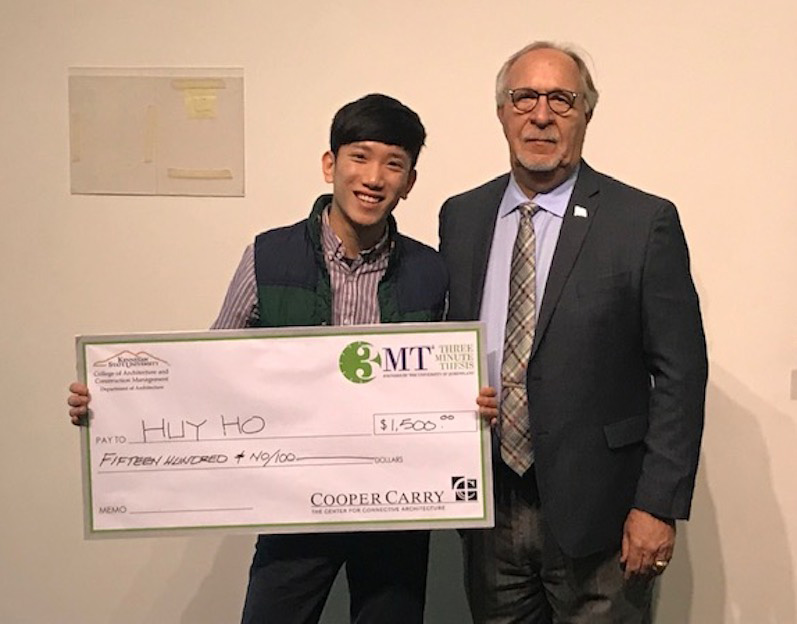Senior architecture major Huy Ho won Kennesaw State’s Cooper Carry Three Minute Thesis Competition on Wednesday, Jan. 22. The competition allows students to present their theses to a panel of local experts in three minutes with one graphic, according to KSU’s website.
Ho’s winning thesis project was titled, “Camps in Crisis: Challenging the Architecture for Refugees,” according to KSU’s website. He said that the inspiration for his thesis came from two distinct topics — his parents and his travels.
“My research began and to my surprise Europe had a much bigger refugee crisis than the [United] States did that is still present today,” Ho said. “Therefore, my thesis aims at tackling the refugee crisis through an architectural lens with the end goal of integrating refugees into the society and culture that I fell in love with.”
Ho explained that his personal passion related to immigration stemmed from his own family.
“My family took refuge here in the United States from Vietnam and had trouble integrating into society” Ho said. “This was most likely due to their education — or lack thereof — and the language barrier.”
These interests merged together after he traveled to Europe, Ho said. Tourist destinations and local culture both influenced him.
“I was also inspired by my trip to Europe last summer,” Ho said. “Like everyone else, I fell in love with all the touristy … destinations that Europe had to offer, but more importantly, I fell in love with the culture and lifestyle.”
Winning this competition has benefited Ho in a few different ways, including improving his public speaking skills. He feels that the competition helped him to be more confident in the arena of scripted and persuasive public speaking.
Ho said he chose to pursue an architectural career for several reasons. He emphasized his love of design, and explained that throughout his college experience, architecture has gained new meaning for him.
Looking at the impacts of architecture upon the world, Ho highlighted a few different aspects.
“Throughout the centuries, architecture has been the nexus of revolutions or resounding effects of it,” Ho said. “Today, it can do the same and that’s why I love architecture and design.”
Ho said he hopes to see more human interest in the future of architecture related to refugees. Human sensitivity could have a great positive impact upon architecture for refugees, Ho said.
“To elaborate, today we place refugees in camps, makeshift shelters, cramped spaces and shipping containers, which are all either separated from society physically — and if not physically — culturally by not providing means for the local community to be curious and thus creating an invisible wall,” Ho said.
He said that this type of architecture evokes negative feelings from local people, which is why he hopes to see architecture become more intentional.
“Rather than just providing needs and creating a sense of dependency, architecture should be dignifying,” Ho said.
In the future, Ho said he hopes to live and study in Europe.



